- Quick Read
- Deep Read ( 11 Min. )

Why is Christian Science in our name?
Our name is about honesty. The Monitor is owned by The Christian Science Church, and we’ve always been transparent about that.
The Church publishes the Monitor because it sees good journalism as vital to progress in the world. Since 1908, we’ve aimed “to injure no man, but to bless all mankind,” as our founder, Mary Baker Eddy, put it.
Here, you’ll find award-winning journalism not driven by commercial influences – a news organization that takes seriously its mission to uplift the world by seeking solutions and finding reasons for credible hope.
Explore values journalism About usMonitor Daily Podcast
- Follow us:
- Apple Podcasts
- Spotify
- RSS Feed
- Download
TODAY’S INTRO
A blues musician’s individuality, honored years later by his high school
Last week, Otis Taylor finally received his high school diploma in his 70s.
Mr. Taylor, a celebrated blues musician, was the guest of honor at Manual High School in Denver. The occasion was more than just a graduation ceremony. It was an act of atonement.
In 1966, Manual High School expelled Mr. Taylor after he refused an ultimatum.
“‘Cut your hair, or you won’t graduate,’” recalls Mr. Taylor in a phone call. “It was very simple.”
His hair wasn’t that long, just a little fluffy on the sides. But administrators at the mostly Black school targeted students, including white hippies, who weren’t regulars at a barber shop. Back then, Mr. Taylor stood out as different. He was a Black kid who played a banjo while riding a unicycle. The teenager listened to the Paul Butterfield Blues Band and Muddy Waters.
Asked what happened after he was expelled, the musician offers a wry response: “I just became Otis Taylor.”
The nonconformist artist has released 16 albums, including the 2023 release “Banjo ...” His hard-to-classify sound, which he dubs “trance blues,” centers around the banjo. The songwriter is drawn to exploring injustices faced by Native Americans and African Americans. But his unconventional approach kept him out of the mainstream. His belated breakthrough came in 2009 when director Michael Mann featured the song “Ten Million Slaves” in the movie “Public Enemies.” More recently, the National Museum of African American Music in Nashville, Tennessee, has also recognized Mr. Taylor’s work. Now, the musician’s alma mater has made amends for failing to support the musician’s individuality.
“It’s the antithesis to who we are as Manual today, that type of discrimination,” says school principal Joe Glover in a phone call. “Now we embrace that creativity. We embrace that uniqueness. ... You could tell this was meaningful and powerful for him.”
Mr. Taylor doesn’t begrudge choosing an unusual path in life.
“I have two kids. A beautiful wife, married for 37 years,” he says. “Why should I have regrets?”
Describing the graduation ceremony as a surreal experience, Mr. Taylor jokes, “Now I can apply for the Berklee school of music.”
Editor’s note: This story has been updated to correct an error about Mr. Taylor’s race. He is Black.
Share this article
Link copied.

Help fund Monitor journalism for $11/ month
Already a subscriber? Login

Monitor journalism changes lives because we open that too-small box that most people think they live in. We believe news can and should expand a sense of identity and possibility beyond narrow conventional expectations.
Our work isn't possible without your support.
A deeper look
California battles ‘ghost lake’ – and political divisions
Tulare Lake, which didn’t exist mere months ago, could overwhelm a town and two state prisons. To meet the challenge, local, state, and even federal agencies are having to work together.
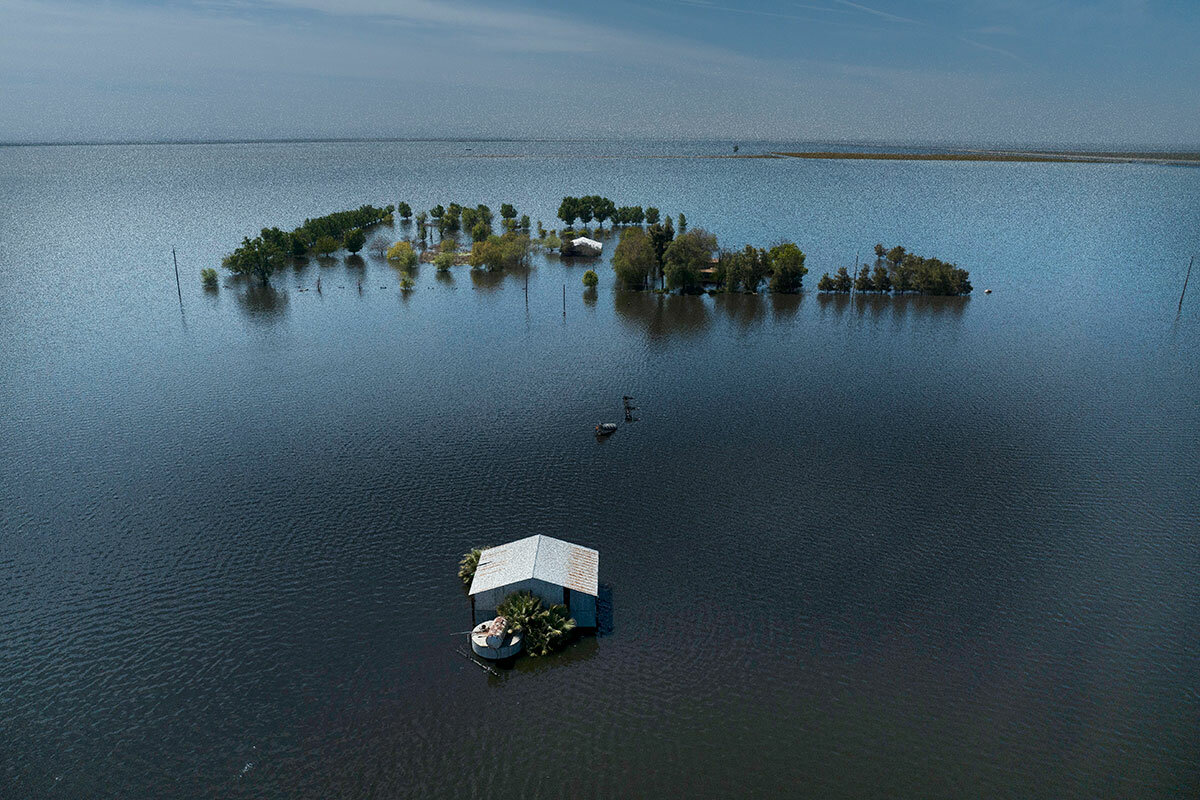
The water stretches all the way to the horizon, white clouds reflected on its surface, as shorebirds caw and fish jump. Looking at it now, it’s hard to believe that only two months ago, there was no lake here at all.
Since Tulare Lake first appeared, after this spring’s historic rainfall, it has grown to 100 square miles – making it one of California’s top five largest lakes. And it’s about to get bigger.
As the weather warms, causing a record snowpack to run down from the mountains, four of the rushing rivers will end right here. The county is racing to raise a 14½-mile-long levee that’s protecting Corcoran’s downtown and two of the state’s largest prisons from being submerged.
It’s an all-hands-on-deck kind of event, requiring coordination among local, state, and federal agencies as they work to reinforce levees, manage reservoirs, contain environmental damage, and communicate emergencies.
That kind of cooperation hasn’t always existed between this mostly Republican area and Democratic leaders in Sacramento. But as Tulare Lake grows, it’s forcing a reset.
“It’s very apparent that we in the lake bottom need to be in closer partnership with the communities upstream,” says Corcoran City Manager Greg Gatzka. “That’s starting to happen now.”
California battles ‘ghost lake’ – and political divisions
The water stretches all the way to the horizon, white clouds reflected on its surface, as shorebirds caw and fish jump. Looking at it now, it’s hard to believe that only two months ago, there was no lake here at all.
Until recently, this land was covered with pistachio trees – acres of them, along with cotton, tomatoes, and other crops. Now it’s all under water, with just a few half-submerged tractors and the roof of a shed hinting at what the fields around Corcoran looked like before 2023’s record rainfall.
“Everyone was praying for rain, and now everyone’s praying for it to stop,” says Corcoran Deputy Police Chief Gary Cramer. He briefly excuses himself to stop some people from driving past the “closed road” sign. “Every time I come out here,” he adds, “the water just gets higher.”
Since Tulare Lake appeared this spring, it has grown to 100 square miles – making it one of California’s top five largest lakes. And it’s about to get bigger.
As the weather warms, causing this year’s record snowpack to run down from the Sierra Nevada – “The Big Melt,” as scientists and locals alike nervously call it – four of the rushing rivers will end right here. In preparation, trucks are throwing up clouds of dust while driving across a 14½-mile-long levee, hurriedly reinforcing the last defense protecting Corcoran’s downtown and two of the state’s largest prisons. Farther in the distance, crews rescue valuable equipment from telephone poles before they, too, slip under water.
“We know the size of the lake is going to grow,” says Karla Nemeth, director of California’s Department of Water Resources. “It’s a matter of how much.”

Much will depend on how fast the snow melts and how much water can be absorbed into communities and reservoirs upstream. But one thing is clear: Preventing the lake from overtaking Corcoran and the surrounding towns in the Tulare Basin is an all-hands-on-deck kind of event that requires cooperation. Local, state, and federal agencies will have to work together to raise levees, manage reservoirs, contain environmental damage, and communicate emergencies – a level of coordination that hasn’t always existed between the conservative valley, home to Republicans like U.S. House Speaker Kevin McCarthy, and Democrats governing the state from the capital of Sacramento.
Some locals still insist they don’t really need outside help to manage the flooding. Others criticize Sacramento for being slow to come to their aid. State officials, for their part, say local distrust – and a willful blindness toward climate change – have hampered communication and action.
But as Tulare Lake grows, it’s forcing a reset. Recently, California Gov. Gavin Newsom announced that the state is more than doubling its investment in the area, bringing the total up to $500 million. The Federal Emergency Management Agency has established a Disaster Recovery Center in Tulare County, a “one-stop shop,” where state and federal agencies each have their own foldout tables with pamphlets on aid.
And as they stare down a crisis, many here are reluctantly grateful for the help.
“It’s about flexing that cooperation muscle,” says Ms. Nemeth. “We are a very politically diverse state, which is a challenge with water management. ... If we collectively have the courage to reckon with these extremes of both drought and flood, then we can all make better decisions. No one likes to deal with this stuff on the fly.”
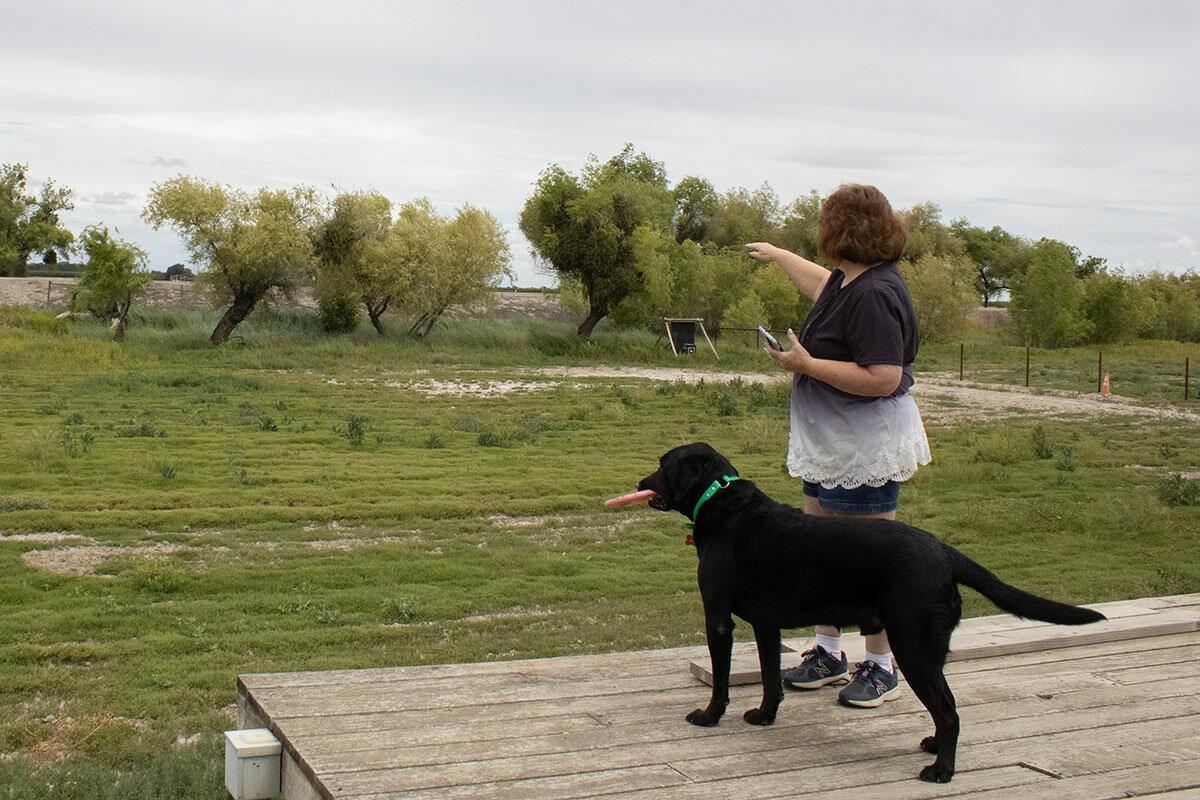
Weather whiplash
Longtime locals say they always knew there was a chance this “ghost lake” could reappear. Some here remember the last two times the lake formed, in 1969 and 1983. Others have only heard the stories.
Jacob Figueroa, who opened Lake Bottom Brewery & Distillery in Corcoran in 2019 when “there was no water around,” had heard about the lake from his father and grandfather. “We’re a little nervous [about the flooding]. This is our business, our livelihood,” says Mr. Figueroa. “It sucks, but we were in a drought for so many years.”
This sense of weather whiplash is common around town. Donna Benson, whose backyard abuts the Kings River, has hosted family reunions for years. She flips through old photos on her phone: family members sunning on her dock, children swimming in the river with plastic-foam noodles. But over the past three years, which were the driest on record for California, the riverbed dried up. She bought a slip-and-slide for the children.
That all changed this spring. A relentless series of “atmospheric rivers” – corridors of moisture coming up from the tropics – dumped massive amounts of rain on California.
Kings County experienced flooding in places “we never would have imagined,” says Greg Gatzka, the city manager of Corcoran, which is in Kings County.
In the space of four months, the San Joaquin Valley went from a “D4 Exceptional Drought” classification, the most serious status assigned by the national drought warning system, to a green shading on the map, which confirms no drought status whatsoever.
Officials have prohibited residents from swimming in the now-rushing Kings River, upending Ms. Benson’s annual reunion yet again. Seepage – water coming through and beneath the dirt levee – has turned her backyard into a muddy swamp, and her dock is partially submerged by the rising river.
“In the future, with climate change, we may get wetter wet years and drier dry years,” says Thomas Harmon, director of the Sierra Nevada Research Institute at the University of California, Merced.
Most years, the Tulare Basin uses more groundwater than gets replenished, which causes subsidence – a gradual sinking of the land that makes the area act like a bathtub. And because the earth beneath the basin is thick clay, scientists characterize it as a bathtub without a drain. Even in a best-case scenario, the current lake is expected to stick around for at least two years.
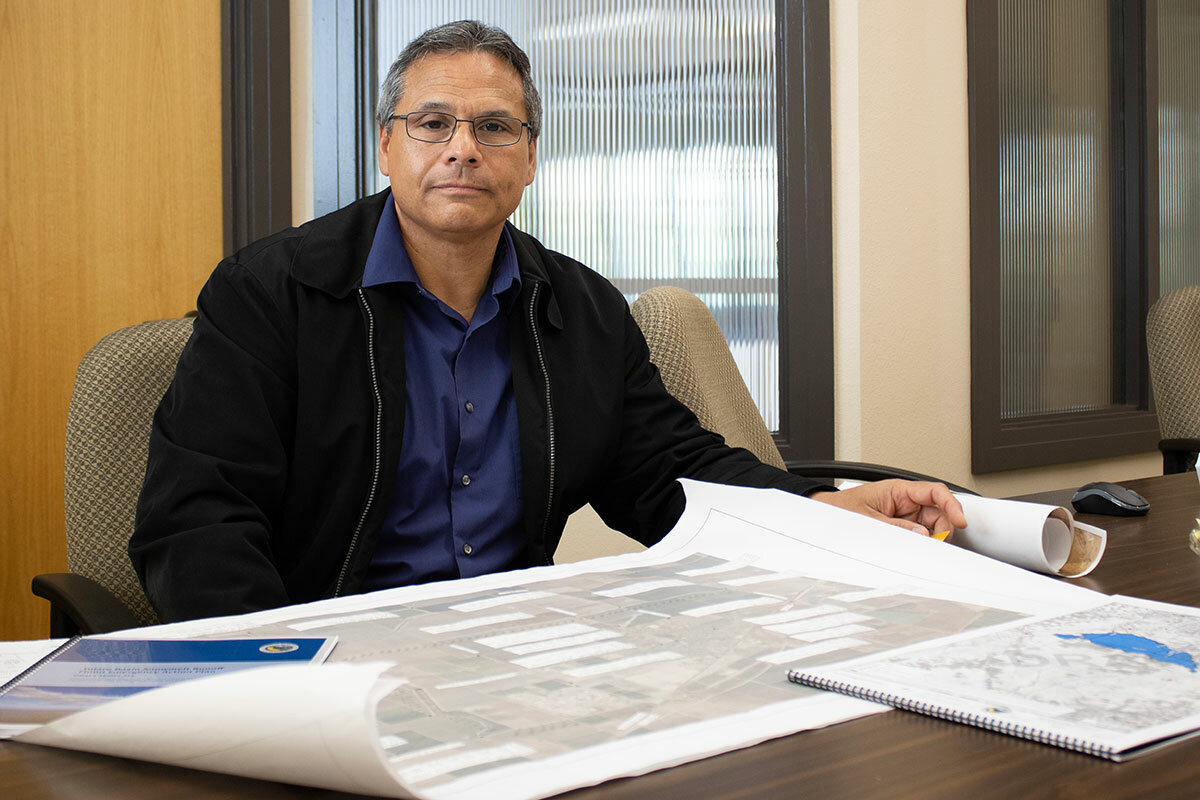
“The land wants to be a lake,” says Mr. Harmon.
That’s because for hundreds of thousands of years, it was. Despite being known these days mostly for droughts and water wars, this swath of central California between Fresno and Bakersfield is actually a wetland at heart. Before a chain of dams was built to ensure year-round water for California’s agriculture and booming population, rivers from the Sierra Nevada rushed downhill unimpeded and met up in this same low-elevation dish: Tulare Lake, once the largest body of fresh water west of the Mississippi.
When Spanish explorers discovered the lake with its endless marshes, they gave it the name Los Tules, a derivative of the Spanish word for reeds. Old black-and-white photos show pioneers camping along its banks. Woolly mammoths and mastodons, whose bones have been found in nearby soil, likely drank from its shores.
But by the early 20th century, California’s water infrastructure project had begun in earnest. And by the 1960s, the U.S. Army Corps of Engineers had dammed all four of the rivers – the Kings, Kaweah, Tule, and Kern – that run from the Sierra Nevada to the Tulare Basin.

The alteration to the landscape had real costs. Estimates suggest the San Joaquin Valley has lost 95% of both its original wetlands and riparian woodlands, endangering many species, particularly birds. But it also has had real benefits: The Central Valley today produces one-quarter of America’s food, including 40% of the country’s fruits and nuts. It makes the San Joaquin Valley, as it was aptly described by the late historian Kevin Starr, “the most productive unnatural landscape in the world.”
And Corcoran, where a sign welcomes visitors to the “Farming Capital of California,” is its nucleus.
A culture of distrust
The Corcoran-based J.G. Boswell Co., whose founder created California’s first giant agribusiness, lobbied years ago for the dams and the subsequent draining of the lake. Today, the company’s neat rows of pistachio trees grow directly behind the levee, while the farm of the local Hansen family sits submerged on the other side. This discrepancy has been a source of local contention, with some farmers claiming that certain levee breaches and the flooding of some land were intentional.
Others say Boswell’s presence ensures their safety: They aren’t worried about the floods because they know Boswell has an interest in making sure the levees don’t fail. Boswell has been “our biggest savior in all of this,” says Mr. Gatzka, the city manager. He unrolls a survey map of the Corcoran levee that the company provided, pointing out elevations that will need to be raised.
The levee surrounding Corcoran’s downtown and the prison system is 188 feet above sea level; the water currently sloshing up its sides reaches to 179 feet. The state has finally agreed, says Mr. Gatzka with a sigh, to raise the levee up 4 feet, to 192.
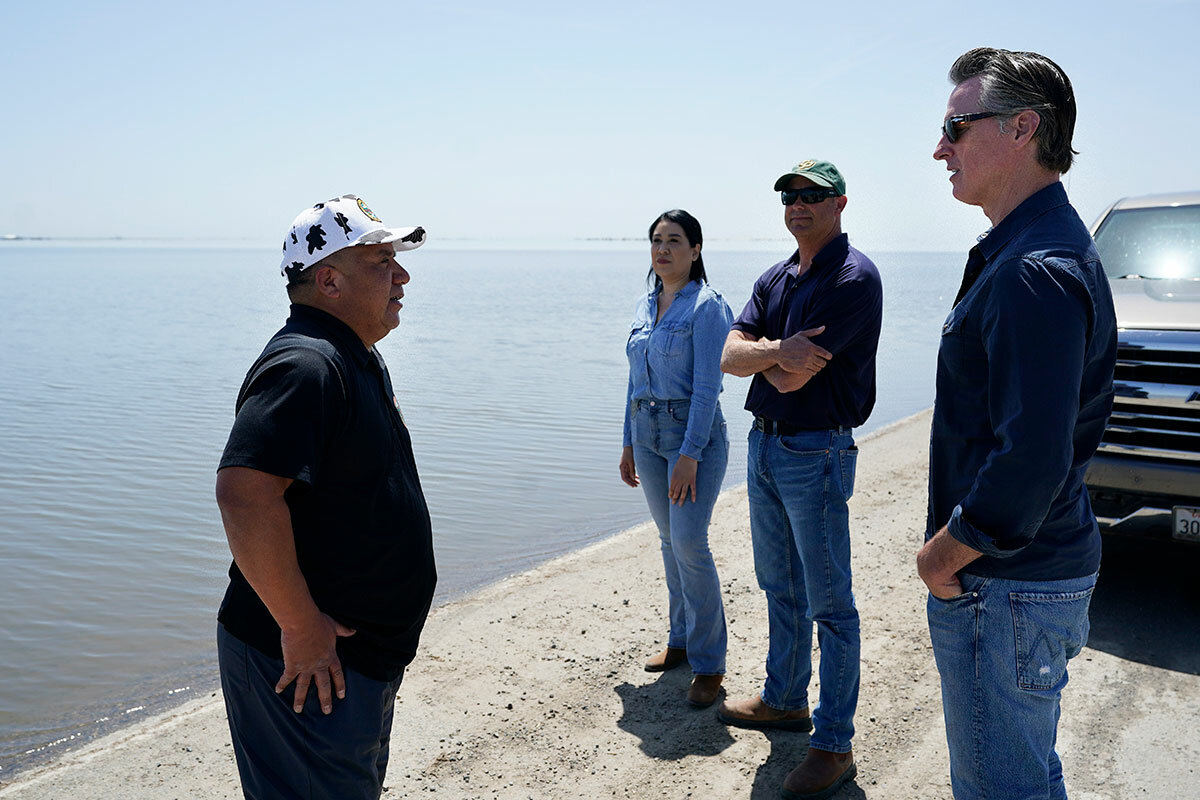
“Trying to get the state and a federal agency to prioritize funding is very difficult,” says Mr. Gatzka. “They are all oriented around disaster recovery, and we can’t afford to wait. When you look up at those mountains, and you see all that snowpack, we know it’s coming down here.”
Despite two local reservoirs reaching or surpassing their capacity during March’s heavy rains, all four, which are carefully managed with periodic releases, now have room to absorb incoming water from The Big Melt.
Even then, it may not be enough. California’s mountains are holding 300% to 400% more snow than normal, much of it at lower elevations – meaning the snow will melt faster than at higher, colder temperatures. The severity of the flooding will depend on if – or when – a heat wave occurs.
“The state says this area is a black hole,” says Mr. Gatzka, circling his town and the lake basin on a map. “And it has been, because it hasn’t been prioritized.”
That’s because the state hasn’t been granted access, responds Ms. Nemeth. Back in 2007 when California was drafting its Central Valley Flood Protection Plan, the four counties in the Tulare Basin – Tulare, Kings, Kern, and Fresno – opted out of participating.
That decision was likely influenced by a “general political culture about not wanting to give information to the government,” says Ms. Nemeth. Mr. Gatzka confirms as much, saying the plan was just “another board with its own priorities.”
But this management system would have allowed the state to periodically gather data, says Ms. Nemeth, rather than being “entirely reliant on the counties” to provide updates. She contrasts the current situation in the basin with what’s going on in other Central Valley counties, most of which are having a “different experience” with flooding because the state already knew about levee soft spots and areas with significant subsidence.
“A decade-plus on, we are seeing the implication of not being part of that planning process,” says Ms. Nemeth. “Had they been involved in the plan, we would all know each other.”

Spirit of self-reliance
Among some locals, resentment toward state government, deep with age like the Tulare Basin, still lingers. Two-lane farming roads crisscross the valley, intersecting at four-way stops where tractor beds are parked with posters that read “Make California Great Again” and “Dam Water Grows Food.”
Several people insist the state dragged its feet on levee aid because Democratic state leaders saw little benefit to helping this Republican pocket. Folks here scoff at liberals in cities who want to save little-known endangered species – like a 2-inch fish called the delta smelt – while denying farmers the water they need to put food on the nation’s tables.
“It’s intentional, in my view,” says local resident Ronald Caetano, of the area’s drought and flood cycles, maintaining that the rivers always seemed to flow steadily when he was a child. “A lot of California’s drought in the valley is man-made.”
Mr. Caetano, who owns a trucking company, created a “community flood watch” Facebook group for the Island District, an area that’s surrounded by the Kings River. Neighbors post daily to the group’s more than 1,000 members, warning of closed roads, offering trench-digging equipment, and sharing photos – a testament to this area’s can-do spirit and sense of self-reliance.
Island District neighbors have also been keeping in touch through the Island Property Protection Association, whose homepage states, “No call for help will ever be unanswered.” Resident Tony Oliveira founded the group after the 1969 flooding and reactivated it during the 1983 flood and again this March.
Communication is easier this time around with cellphones and a website, Mr. Oliveira remarks, standing in the backyard of Tom and Denise Taylor, which abuts the Kings River.
Mr. Taylor’s boots are muddy from installing a new pump to move water away from his house and horse farm, where half the fields are out of commission due to standing water. He points to a neighbor on a nearby tractor who helped them dig a moatlike trench in their backyard the other day. Ms. Taylor, who wakes every morning afraid she’ll find her horses chest-deep in water, has decided to start moving some of them to a neighbor’s paddock with a higher elevation.
Mr. Oliveira explains a new phone tree that his group is setting up. If a levee breaks, local officials will tell the team captains, who will then spread the word to others. This kind of response can only be effectively handled at the local level, he and the Taylors agree.
“Local governments are run by your sister, your brother, your neighbor, your friend. They have a vested interest,” says Mr. Oliveira. “Local, local, local,” he emphasizes, pointing to his phone, where he just got a text from someone at a local resource management agency with the recent flow numbers from the Pine Flat Dam. The Island District, and its collective approach to combating this year’s flooding, is the “epitome” of rural California, he says.
Still, many here are also beginning to recognize the limits to what they can do on their own – especially as they look ahead.
“We’re preparing for the worst, because that’s what you have to do, but we’ll be all right. It’s next year that I’m worried about,” says Deputy Chief Cramer. Predictions of an El Niño winter could mean more heavy precipitation across central and Southern California.
And rather than starting the season with an empty basin, they will still have Tulare Lake, which will have spent months sloshing against – and wearing down – the levees.
But they could also start the season with a newfound appreciation for cross-government cooperation.
“It’s very apparent that we in the lake bottom need to be in closer partnership with the communities upstream,” says Mr. Gatzka. “That’s starting to happen now.”


Why some young Chinese are seeking a simpler life
A difficult job market demands compromise. In China, record-high unemployment has leaders urging youth to “struggle” in the name of national rejuvenation, but young job seekers are hoping for a more balanced lifestyle.

- Quick Read
- Deep Read ( 5 Min. )
Thousands of young people from around the country have been making the pilgrimage to a sprawling Tibetan Buddhist monastery in Beijing to pray for good fortune – especially in finding jobs.
While China works to revive its economy after three years of strict COVID-19 lockdowns, the unemployment rate for Chinese youth aged 16 to 24 has surged, reaching a record 20.4% last month. With another 11.6 million college graduates flooding into the job market this year, the pressure is only likely to mount, experts say. And so will their search for comfort and hope as job seekers look for careers that align with their values.
Indeed, even as China’s leadership urges young people to work harder and bear the “heavy responsibility of national rejuvenation,” official data suggests that, overall, Chinese youth are downgrading their career ambitions. They are more willing to accept lower pay and live outside “first-tier” megacities such as Beijing in exchange for comfortable, stable jobs.
College freshman Xie Taoyao recently decided that she will move home to Hebei Province, after finishing her engineering management degree, and become a teacher.
“My parents will be closer, and everything will be convenient,” she says. “In the first-tier cities, the pressure is quite great, but it’s less in smaller towns. ... A lot of the young people around me feel the same way.”
Why some young Chinese are seeking a simpler life

Gazing up at the faintly smiling Buddha, the Chinese youths kneel, raise smoldering sticks of incense in clasped hands, and silently make their wishes. Then they bow deeply, three times.
Thousands of young people from around the country are making the pilgrimage to Yonghe Temple, a sprawling Tibetan Buddhist monastery in Beijing, to pray for good fortune – especially in finding jobs.
“A lot of young people here are praying to the Buddha to help them find work,” says Qian Ninan, a college student from Inner Mongolia, adding that she hopes her petitions before the temple’s many Buddhas will smooth her own career journey.
“I am worried I may have trouble finding a job in the future,” says Ms. Qian, a student of Chinese-Mongolian translation, who made the trek to the Beijing temple on the May 1 Labor Day holiday.
Even as China works to revive its economy after three years of strict lockdowns under the “zero-COVID” policy that ended in December, the unemployment rate for Chinese youth aged 16 to 24 has surged, reaching a record 20.4% last month. This comes as young Chinese are reconsidering work-life balance altogether, increasingly opting for less demanding jobs. With another 11.6 million college graduates flooding into the job market this year, the pressure is only likely to mount, experts say. And so will their search for comfort and hope as job seekers look for careers that align with their values.
“You had a huge expansion of university education in China over the last couple of decades,” creating a surplus of youth competing for limited white-collar jobs, says Andrew Batson, China research director for Gavekal Dragonomics, which covers macroeconomic and market trends in China. Meanwhile, “a lot of the jobs that the economy is creating are blue-collar jobs,” he adds. “It’s a mismatch in terms of people’s expectations.”

Struggle and rejuvenation
In response to the high unemployment and shifting youth attitudes, China’s leadership is urging today’s young people to double down. They should work harder and bear the “heavy responsibility of national rejuvenation,” in the words of a recent commentary in the Communist Party mouthpiece, People’s Daily.
Top leader Xi Jinping is calling on young people to go labor in rural areas and temper themselves with hardship, as he did back in 1969, during Mao Zedong’s “down-to-the-countryside” campaign. “The hard life of going to the countryside for seven years was great training for me,” Mr. Xi was quoted as saying on May 4 in a front-page People’s Daily article featuring his ideas on the qualities of “good youth.”
Young people must prepare for “struggle,” the article continues. “If you choose a Buddha-like mindset, you won’t scale the peak of your career,” it says.
But the mood at the temple suggests youth are setting less lofty goals. Seeking relief from the pressure cooker of China’s job market, many say they want to carve out a more balanced life.
Leaving the temple after offering prayers, a college senior from the central city of Wuhan says that even with a computer science degree, he isn’t confident he’ll land a position at a major tech company. “It’s really hard to find a job in China now,” he says, withholding his name to protect his privacy.
Instead, he says he’s simply looking for work that will allow him some free time often lacking in China’s “9-9-6” work culture: a 9 a.m. to 9 p.m. schedule, six days a week.
“I’ll be glad to just have a job with weekends off,” he says.
Seeking small-town life
Overall, Chinese youth are downgrading their career ambitions, official data suggests. They are more willing to accept lower pay, and live outside the more expensive “first-tier” mega-cities of Beijing, Shanghai, Guangzhou, and Shenzhen, according to a 2022 survey on employment trends of Chinese college students released by the State Council, China’s cabinet.
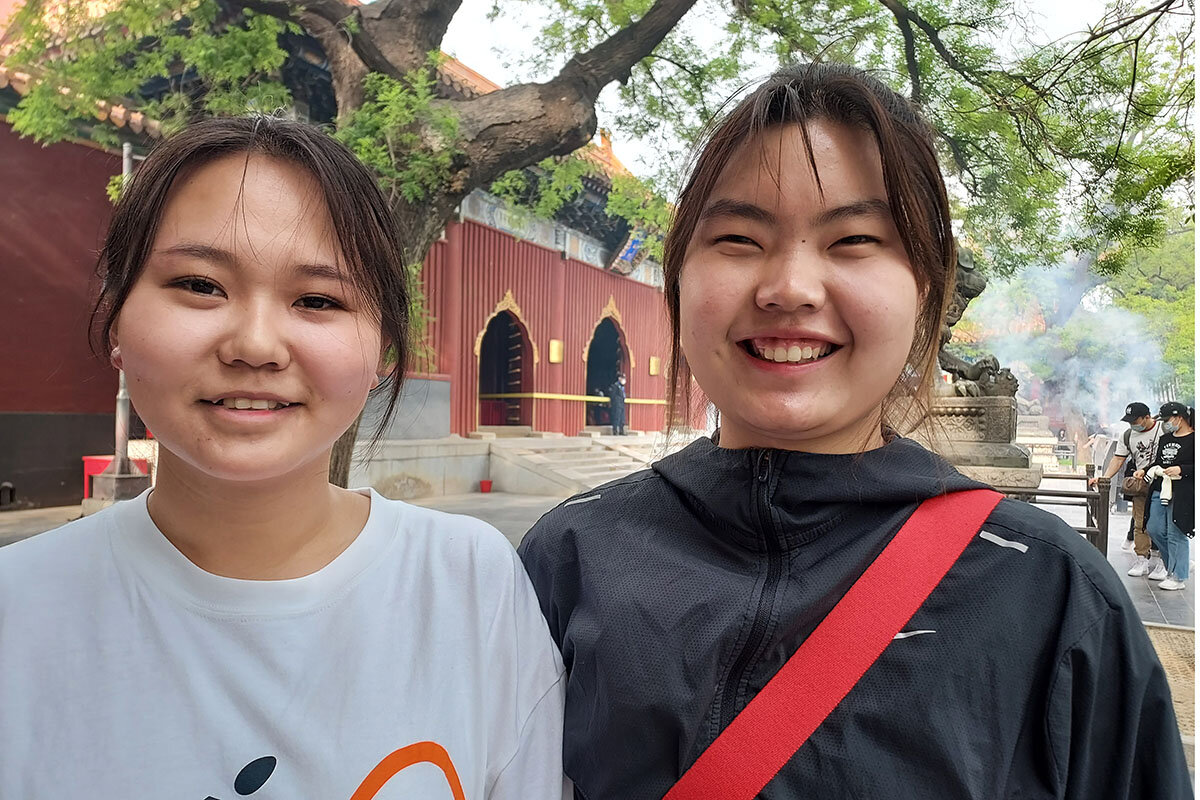
The survey found an “intensified mentality of graduates seeking stability and the pursuit of a comfortable life,” in part by pursuing work in state-run enterprises and public sector jobs. Indeed, those sectors have acted as a “ballast,” with more than a third of state-owned enterprises and state agencies increasing their overall number of jobs, the report said.
While revived economic growth and consumer spending will eventually create more jobs for young people, Mr. Batson from Gavekal Dragonomics says, and ease the current unemployment crisis, it’s less clear how that will impact the shifting youth attitudes.
“People are making lifestyle decisions,” says Zak Dychtwald, founder and CEO of the Shanghai-based Young China Group. While older Chinese were willing to work 60 to 80 hours a week to get their families ahead, “this younger generation is far more oriented towards living in the moment,” he says.
The gravitation toward the security of government jobs “risks a decrease in innovation, which China can’t really afford,” he says.
Xie Taoyao, a college freshman who recently visited Beijing’s Yonghe temple with her boyfriend, embodies such trends.
Ms. Xie recently decided it will be too hard to get a job after finishing the engineering management degree she’s enrolled in. Instead, she plans to return to her hometown in Hebei Province after graduation and become a teacher.
Back home, “my parents will be closer and everything will be convenient,” she says. Her boyfriend, from the same town, plans to return, too.
“In the first-tier cities the pressure is quite great, but it’s less in smaller towns,” she says. “A lot of the young people around me feel the same way.”
Kneeling before one Buddha after another at the temple, Ms. Xie said she gained a sense of determination and hope. “It was a way to encourage myself,” she says.

In helping new parents, military hopes to retain them
Men and women make big work commitments in military service, but they often also have big commitments in family life. A new paid leave policy aims to help military families find a better balance.
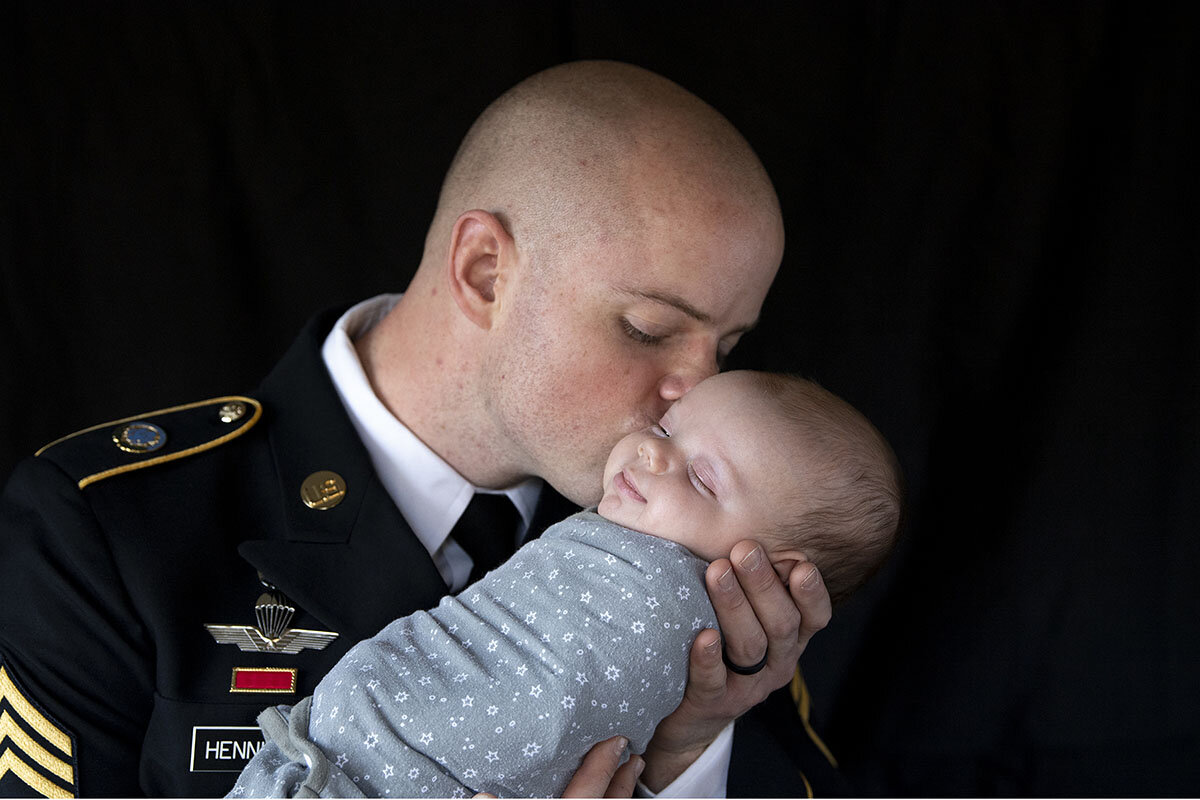
- Quick Read
- Deep Read ( 7 Min. )
When Lt. Col. Ryan Russell and his wife, Lt. Col. Meredith Beavers, had their first child, he was entitled to three weeks off from the Air Force, and he fretted about missing work during that time.
Now the U.S. military’s congressionally mandated family leave policy, expanded earlier this year, doubles paid time off for mothers to 12 weeks and gives new fathers the same amount.
So, with the birth of their second child, Lieutenant Colonel Russell had 12 weeks off. What he discovered in using it, he says, was a more balanced parenting relationship with his partner and a much closer bond with the baby. “I haven’t focused on work,” he marvels, “and it’s been fantastic.”
Calls for better treatment of new military parents had been percolating up from within the ranks to become a driver of the change.
The point is to strengthen the bond between service members and their loved ones, military officials say. But it’s not lost on them, either, that the new policy could also help retain service members in an era when the U.S. military is struggling to meet its recruiting goals.
In helping new parents, military hopes to retain them
When Lt. Col. Ryan Russell and his wife, Lt. Col. Meredith Beavers, had their first child, he was entitled to three weeks off from the Air Force. He’s not sure whether he took all the leave or not.
“Those 21 days were great – don’t get me wrong – but my mind was always focused on, ‘I’m missing just enough work to be a pain when I get back,’” he says.
With the birth of their second child, new Pentagon regulations granted Lieutenant Colonel Russell 12 weeks off. What he discovered in using it, he says, was a sense of “peace.”
Not only has he developed a more balanced parenting relationship with his wife, but the leave has also allowed him, he says, to “truly feel like I know [his newborn] much better” than he knew his elder son in those early months.
And despite fears that it could set back his career, coupled with the guilt he felt when he learned that he would be among the first male service members granted such leave under the new policy, he’s managed to take full advantage. “I haven’t focused on work,” he marvels, “and it’s been fantastic.”
The Pentagon’s congressionally mandated family leave policy, put in place earlier this year, doubles paid time off for mothers, once they have recovered from childbirth, from six to 12 weeks.
Fathers are also now granted 12 weeks of leave. This is up from the three that the Army and Air Force used to allow, and the two weeks the Navy and Marine Corps provided until February 2022, when they increased the leave to three weeks. Adoptive and long-term foster parents are entitled to the same amount of time off under the new policy.
The point is to strengthen the bond between service members and their loved ones, military officials say. But it’s not lost on them, either, that the new policy could also help retain personnel in an era when the U.S. military is struggling to meet its recruiting goals.
In the process, the military’s shift is also the latest sign of the demand for paid leave among workers nationwide, at a time when such benefits remain patchy based on one’s job or state of residence.
A 2020 U.S. Government Accountability Office study, found that the “primary factor” for senior enlisted servicewomen leaving the Army sooner than their male counterparts “was that the female members believed they constantly had to sacrifice family time for their careers.”
“Supporting parents,” Secretary of the Army Christine Wormuth said last year, “is critical to the recruitment, retention, and the readiness of our force.”
The challenge going forward, defense analysts add, is confronting the stigma that still exists, among both men and women, around actually taking the leave.
While it may not disappear completely in a fighting force, “extending parental leave to both men and women reduces an imbalance, since it’s typically women who carry that stigma,” says Katherine Kuzminski, director of the Military, Veterans, and Society Program at the Center for a New American Security in Washington. “I think it levels the playing field a bit.”
Rising calls for change
The need for better treatment of new military parents had been percolating up from grassroots social media groups for some time – to the extent that online posts were increasingly seen as a change-driving “insurgency” of sorts within the halls of the Pentagon.

Staff Sgt. Nicole Edge founded perhaps the most influential of these Facebook groups, “Army Mom Life,” after getting pregnant for the first time in 2016, then suffering a miscarriage that ended in surgery.
When hospital staff told her just after the procedure that she would be given two days of leave to recover, Staff Sergeant Edge pushed back. “I just lost my child and my whole life changed before my eyes – can I have a little more time?” she recalled asking.
The answer was no. She ended up taking two weeks of her own leave “to mourn the loss of my family and the future I thought I’d have,” she said during a Pentagon briefing last year.
As Staff Sergeant Edge shared that experience and, later on social media, the ups and downs of motherhood in the military after the birth of her two daughters, others weighed in, too – to the tune of some 50 to 75 moms a day. The conversations ranged from laments over missed promotions due to postpartum recovery to the difficulties of breastfeeding on the job.
Gradually, the conversations coalesced into a white paper outlining the problems and possible solutions to what they saw as benefit shortfalls. The Army created a working group to look into the suggestions, which included allowing leave for adoptive and foster parents, deferring physical fitness requirements for new moms, and keeping prospective parents undergoing in vitro fertilization in place until their treatment is complete – all of which ultimately came to fruition.
“Voices that started at the soldier level were heard all the way up to our senior leaders – and they listened,” Maj. Sam Winkler, who helped spearhead the “Army Mom Life” effort, said during the April 2022 Pentagon briefing. “We were able to take that small white paper and turn it into policy.”
The new regulations also grant parents leave in the case of stillbirths or miscarriages like Staff Sergeant Edge endured. The Army’s senior noncommissioned officer in charge of personnel, Sgt. Maj. Mark Clark, says that these measures will boost retention within the force.
“The fact that this policy addresses parenthood as a whole shows that the Army cares,” he said during a Pentagon briefing. “I wish policy like this [had been] available for me.”
When Sergeant Major Clark was a private first class, his firstborn child lived just seven days. “As a young PFC just joining the military, I didn’t have enough leave days to actually take time off [or] to figure out how a PFC who isn’t financially secure could bury my child,” he said.
He also struggled “to be there to comfort my significant other and get the emotional counseling that we both needed.”
Now a single father, “I was not aware that there were that many male single parents” in the military, he says, until the new policy initiatives were put forward. At 29,000 male soldiers, there are three times as many single fathers as single mothers in the Army, according to the office of the Army Chief of Staff.
From longer leave, a stronger family
In perhaps the most widely hailed of these developments, longer maternity and paternity leave must now be granted by commanders, except in “exceptional and compelling circumstances” for, say, troops who are deployed or at war. In these cases and all others, troops have one year to use leave and can spread out the time in weeklong increments.

This would have come in handy when Air Force Capt. Amber Kelly-Herard’s first child was born. Back then, Captain Kelly-Herard’s husband was serving in Iraq and had only 60 days to use his paternity leave. But because he was deployed, “he actually missed it and didn’t get any time off,” she says.
Having her husband home for 12 weeks with their fourth child, born in December, allowed him to “bond with our child. And he could help me recover,” Captain Kelly-Herard says.
Later they used the leave to squeeze in a little date time, strolling with the baby together during the day while the older children were at school.
With the whole family home over holidays, it gave the older children, who range in age from 7 to 13, time and space to get to know the baby, too. “We watched movies, and we baked – it was really cool,” she says, adding that they normally use vacation time to visit extended family.
And out of that leave came a stronger family. “Our middle child wasn’t happy with the news when I said I was pregnant,” Captain Kelly-Herard says. “Now she wants to hold him and take care of him.”
Yet even as Pentagon postpartum policies for both men and women evolve with the times, the ongoing challenge, many add, will be getting military service members, steeped in a culture of self-sacrifice, to feel OK about taking it.
When Lieutenant Colonel Russell first realized that he would be among the first fathers eligible under the new policy, for example, he wrestled with the stigma that, in taking 12 weeks of paternity leave, “as a man you’re just skirting out of work.”
What he did to combat that way of thinking in his own mind, he says, was to “challenge myself in not looking at this as 12 weeks off, but looking at it as a way to feel a little bit of the stress and the struggle that my wife feels.”
He remembers back to the birth of his first child and the times his wife “did need help, and I’d compromise as much as I could,” to give her a couple of hours of uninterrupted sleep.
But he also had to be careful not to sacrifice too much of his own rest, he adds, in order to be prepared for a military job that requires him to be supremely alert when he’s on duty.
During paternity leave, he was able to consider, “Where does Meredith need help right now? Where does [my older son] need help?”
And that, says Lieutenant Colonel Beavers, was “a total game changer. I think our marriage is stronger,” she adds. “And our family is stronger too.”

Commentary
Jim Brown stood for those who stood against the establishment
Jim Brown was the paragon of football running backs, whose athletic feats defied belief. But he saw himself, first and foremost, as a man fighting for the freedom of those around him – and himself.
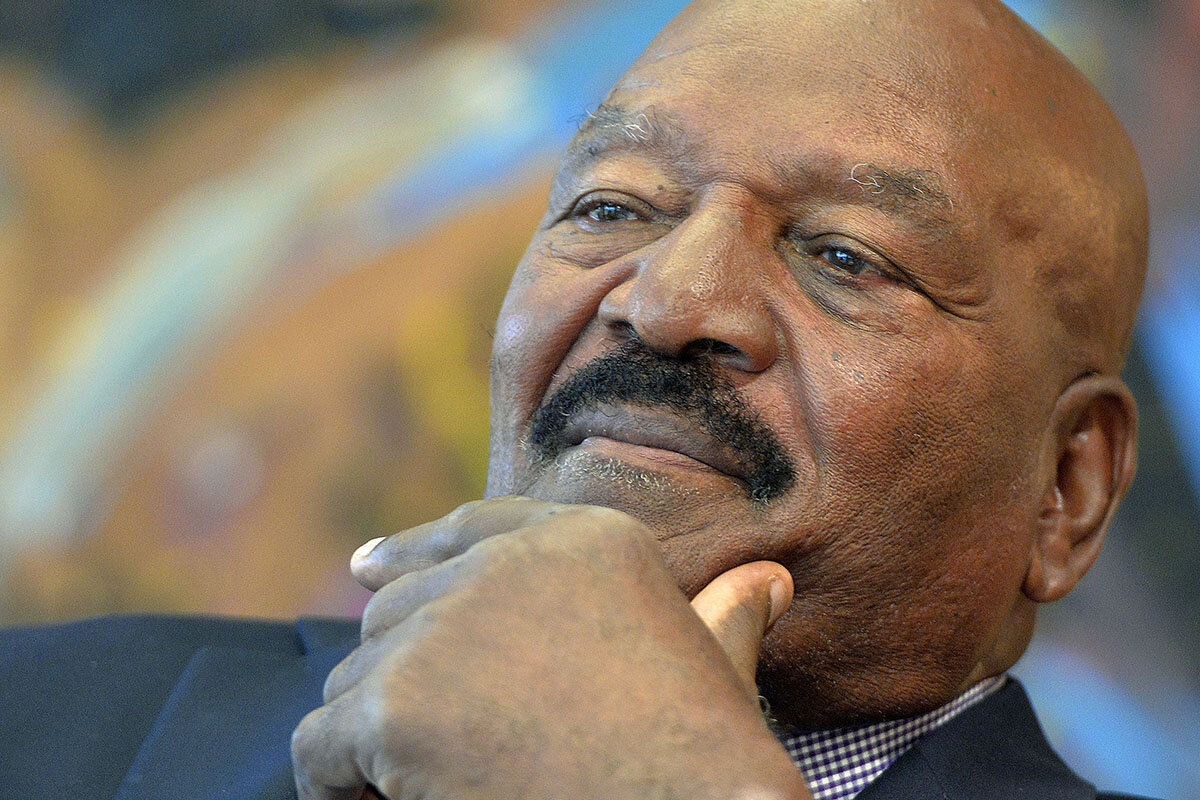
- Quick Read
- Deep Read ( 4 Min. )
In 1966, at the height of his historic football career, Jim Brown sought out Muhammad Ali to test his mettle in the boxing ring. Months later, when Ali refused to join the military, Mr. Brown sought a different kind of test.
He brought together some of the most influential Black athletes in the nation to question Ali. Bill Russell and others peppered The Greatest with questions to determine the honesty of his position. What resulted was the Cleveland Summit, one of the defining moments at the intersection of sports and activism.
Mr. Brown, who died Friday, marched his way to the record books – and over hapless opponents – as a football star for the National Football League’s Cleveland Browns. He famously retired at 30 to pursue a career in acting. His post-football career wasn’t defined by entertainment, however, but empowerment.
He was a complicated man. Allegations and admissions of abuse were well documented. But in speaking for a young athlete suing the NFL in 2003, he was also speaking for himself. “He wants to help other players. He’s told me several times that he wants to do something that is bigger than himself.”
Jim Brown stood for those who stood against the establishment
Arguably the greatest sportsman of all time left one pastime behind during his transition from high school to college and the pros – baseball. Yet Jim Brown always went to bat for others.
Mr. Brown, who died Friday, marched his way to the record books – and over hapless opponents – as a football star at Syracuse University and the National Football League’s Cleveland Browns. Yet his legacy will be remembered as much for social justice as his athletic feats on Sunday afternoons. Throughout his life, he worked to improve economic opportunities for Black Americans and stood for the dignity of those who challenged the establishment.
All these threads came together most memorably at the Cleveland Summit, also known as the Ali Summit, in 1967.
One year prior, Mr. Brown sought out Muhammad Ali to test his mettle in the ring. Months later, when Ali refused to join the military, Mr. Brown brought together some of the most influential Black athletes in the nation to question him, including Bill Russell and Lew Alcindor (who would later change his name to Kareem Abdul-Jabbar). They peppered The Greatest with questions to determine the honesty of his position. What resulted was one of the defining moments at the intersection of sports and activism.
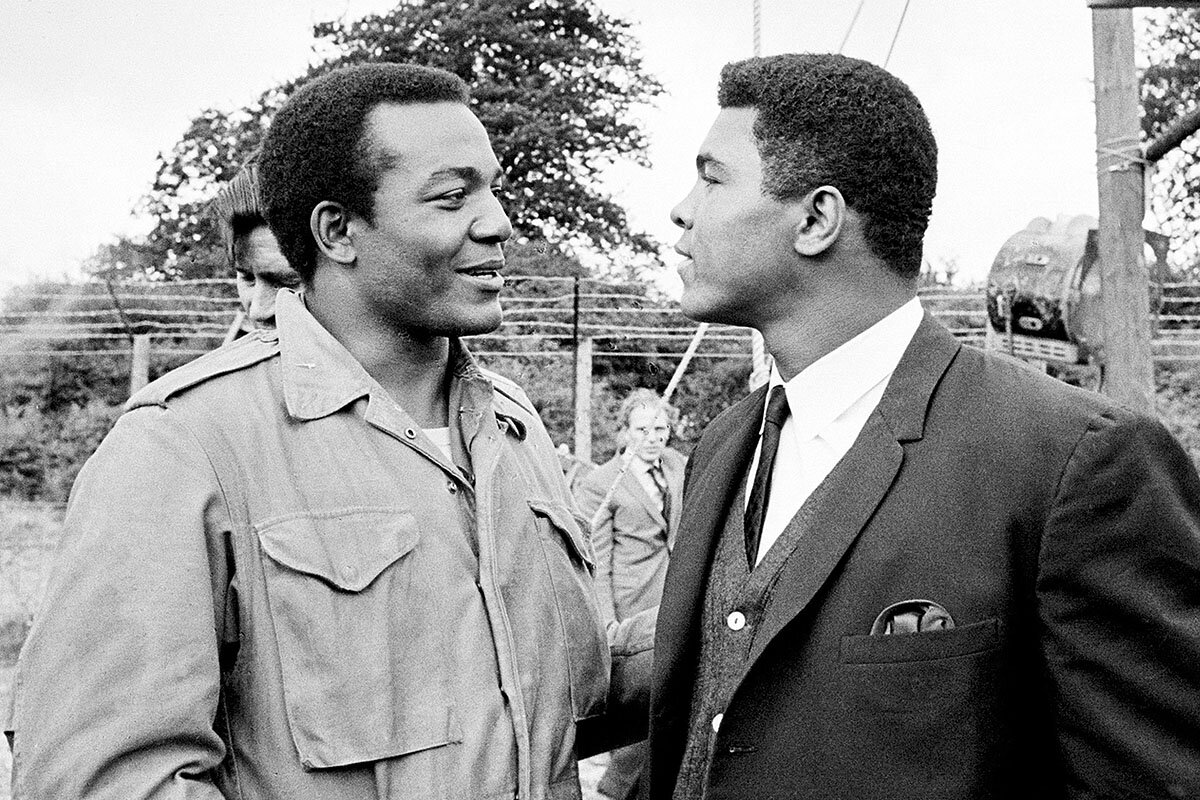
“We had the same attitude about who we were,” Mr. Brown said in a 2014 interview with Larry King. “[Ali and I] never accepted second-class citizenship, and we made it known. We gravitated toward each other.”
Mr. Brown’s gravitas was never in question. But he was a complicated man.
Allegations and admissions of physical and sexual abuse of women were well documented. Charges were dropped or he was acquitted in several cases. Even his perspectives on social justice and Black leadership were challenged. In 2017, when Colin Kaepernick famously took a knee in protest against police brutality, Mr. Brown lauded the reason for the protest, but not Mr. Kaepernick’s gesture. In 2020, Mr. Brown dismissed critics to meet with then-President Donald Trump.
“We had the opportunity to meet with the president of the United States, which everybody doesn’t have that privilege,” Mr. Brown said at the time. “With me, at 82 years old, the only thing I could talk about was how to help other people. So, it was very positive.”
Where his personal life and politics might have come under scrutiny, his accomplishments as an athlete did not.

Mr. Brown was an All-American at Syracuse in both football and lacrosse and also lettered in basketball. He was drafted sixth overall in the first round by the Browns in 1957 and made an immediate impact. The four-time NFL most valuable player remains the paragon for NFL running backs. Through nine seasons, he ran for more than 12,000 yards, unheard of at the time, and never missed a game. He also never missed a Pro Bowl and was a unanimous first-team all-NFL pick in eight of nine campaigns.
With all of those accolades, Mr. Brown retired at 30. Why? Because he never accepted second-class citizenship.
Delays in the filming of “The Dirty Dozen” brought Mr. Brown perilously close to the start of NFL training camp. That led to an ultimatum from then-Browns owner Art Modell – show up to camp on time or be suspended without pay. Mr. Brown responded via letter:
“I am writing to inform you that in the next few days I will be announcing my retirement from football,” he wrote. “This decision is final and is made only because of the future that I desire for myself, my family and, if not to sound corny, my race.
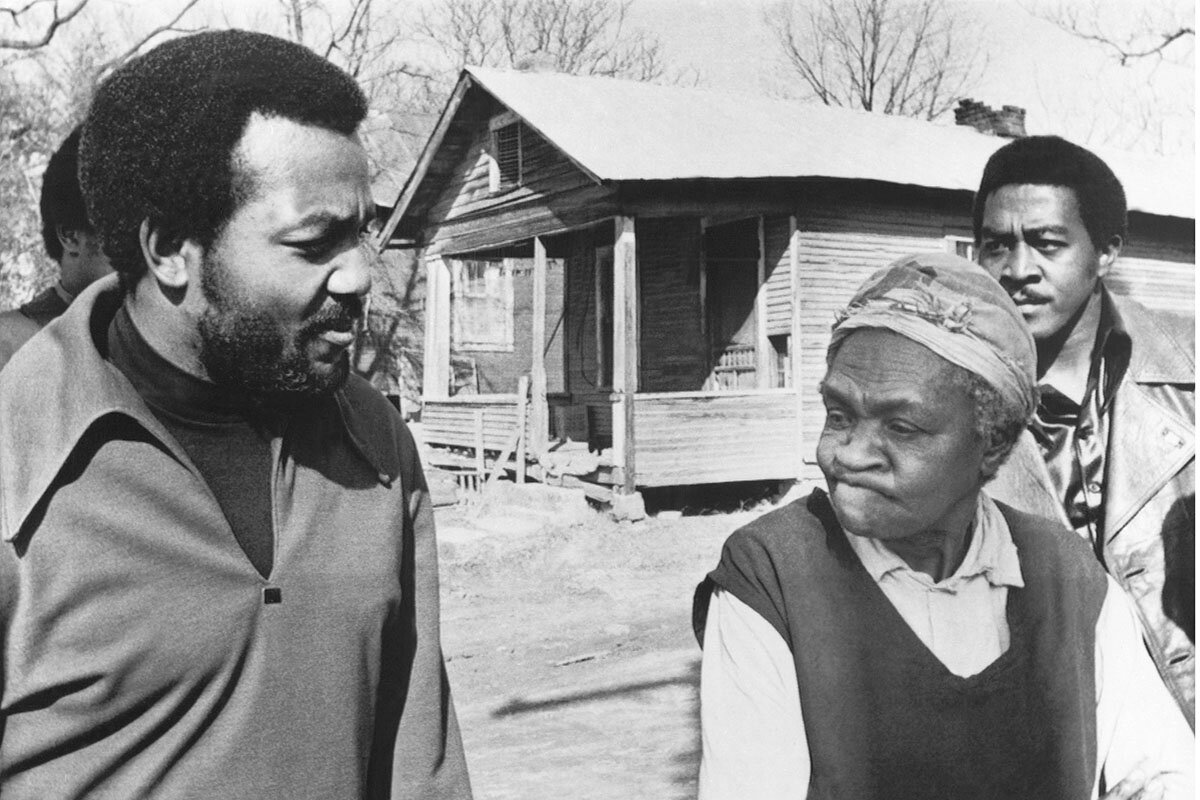
“I honestly like you and will be willing to help you in any way I can, but I feel you must realize that both of us are men and that my manhood is just as important to me as yours is to you.”
Mr. Brown’s defiance jump-started his Hollywood career, most notably alongside Raquel Welch in “100 Rifles.”
His post-football career wasn’t defined by entertainment, however, but empowerment. Even before he retired from the pros, Mr. Brown co-founded the Negro Industrial Economic Union. His ambition was to provide homes and jobs for African Americans. The group’s Cleveland Summit with Ali fittingly became perhaps the most recognizable picture of cultural pride for Black athletes.
That message endured in 2003 when Mr. Brown supported then-Ohio State star Maurice Clarett. Mr. Clarett filed a lawsuit against the NFL, which prohibited players from entering the draft until they were three years out of high school. Mr. Brown likened the lawsuit to baseball player Curt Flood’s legal bid to expand player rights through free agency.
“[Mr. Clarett] understands he can be a pioneer,” Mr. Brown said in a statement. “He wants to help other players. He’s told me several times that he wants to do something that is bigger than himself. And he knows this will be a big challenge for him. He’s fighting what seems like the most powerful organization in the world – one with political power, the best lawyers, all the money.”
The statement could just as easily have been a personal testimony.
[Editor's note: The original version misstated Mr. Brown's draft position.]

In Pictures
Two views of elephant tourism in Thailand
Elephant tourism brings joy to many who visit Thailand. As the industry rebounds from a pandemic pause, so too has discussion of how to best care for the beloved beasts.

- Quick Read
- Deep Read ( 2 Min. )
-
By Joanna Johnson Contributor
-
Chloe Kucera Contributor
The history of people and elephants in Thailand goes back thousands of years. Centuries ago, kings rode these giants into battle. Elephants were used in harvesting timber until Thailand banned logging in national forests in 1989, prompting many owners to turn to tourism.
Then came the dramatic halt caused by the pandemic. Elephants are expensive to keep (they can eat more than 300 pounds of food a day). Most elephant attractions closed their doors, and many elephant owners – who rented out their animals to tourism operators – brought them back to their villages.
As tourism rebounds, many elephants have been brought back to work, renewing concerns about how to properly care for them. Some park operators believe that captive elephants are best cared for when they don’t interact with tourists. Others say riding and bathing the elephants is not harmful as long as the animals’ health is monitored and they’re not overworked. Either way, the industry around Thailand’s nearly 4,000 captive elephants is changing.
Editor's note: This photo essay was produced with support from the Round Earth Media program of the International Women’s Media Foundation. Porntawan Maneechote contributed reporting.
Two views of elephant tourism in Thailand
The history of people and elephants here goes back thousands of years. Centuries ago, Thai kings rode these giants into battle. Elephants were used in harvesting timber until Thailand banned logging in national forests in 1989, prompting many owners to turn to tourism.
Then came the dramatic halt caused by the pandemic. Elephants are expensive to keep (they can eat more than 300 pounds of food a day). Most elephant attractions closed their doors, and many elephant owners – who rented out their animals to tourism operators – brought them back to their villages, some walking along the road for days.
As tourism rebounds, many elephants have been brought back to work, renewing concerns about how to properly care for them.
At parks like ChangChill, operators believe that captive elephants are best cared for when they don’t interact with tourists. This means setting out food for the elephants and letting visitors observe them from a distance.
Others, like Patara Elephant Farm and Thai Elephant Home, believe riding and bathing the elephants is not harmful as long as the animals’ health is monitored and they’re not overworked. Either way, the industry around Thailand’s nearly 4,000 captive elephants is changing. “I want to see standards that elephant camps follow to ensure that all the elephants have good welfare,” says Dr. Pakkanut Bansiddhi, lecturer at the Department of Companion Animals and Wildlife Clinics at Chiang Mai University. “The tourist or any travel organization could use this set of standards to guide them to where to go.”
Editor's note: This photo essay was produced with support from the Round Earth Media program of the International Women’s Media Foundation. Porntawan Maneechote contributed reporting.




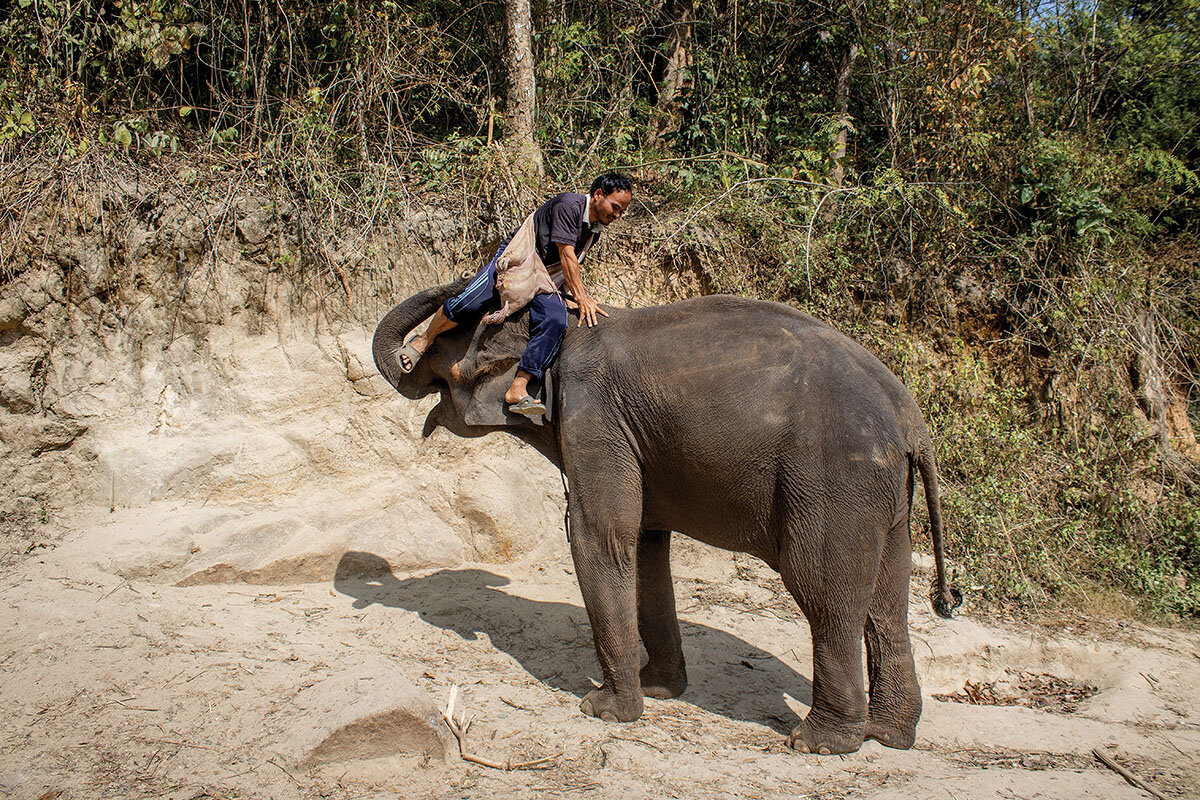
Other headline stories we’re watching
(Get live updates throughout the day.)The Monitor's View
Amid civil war, Sudan’s civilians find charity
- Quick Read
- Deep Read ( 2 Min. )
-
By the Monitor's Editorial Board
Despite five weeks of civil war between factions of a military junta, the people of Sudan have shown remarkable enterprise and resolve. Many are caring for one another. Youth groups have launched apps to help people find resources. Doctors and women’s groups are working together to record incidents of sexual violence committed by soldiers.
Such civic activism helps explain why the two warring generals – erstwhile partners in a 2021 coup – have felt compelled to reassert their democratic intentions despite turning on each other. In early May, they signed an agreement vowing to uphold international legal norms for protecting civilians. And today, their respective forces were set to begin observing a weeklong cease-fire to enable the flow of humanitarian supplies to besieged citizens.
Sudan’s conflict has raised concerns of destabilizing a region beset by drought, hunger, and myriad other conflicts. But it is also reinforcing a civil strength. By tying “the slogan ‘no to war’ with practical assistance,” Muzan Alneel, co-founder of a Sudanese technology institute, wrote earlier this month, “a truly realistic and sustainable approach is being created by the people of Sudan in the face of war.”
Amid civil war, Sudan’s civilians find charity

Despite five weeks of civil war between factions of a military junta, the people of Sudan have shown remarkable enterprise and resolve. Many are caring for one another. Youth groups have launched apps to help people find resources. Doctors and women’s groups are working together to record incidents of sexual violence committed by soldiers.
Such civic activism helps explain why the two warring generals – erstwhile partners in a 2021 coup – have felt compelled to reassert their democratic intentions despite turning on each other. In early May, they signed an agreement vowing to uphold international legal norms for protecting civilians. And today their respective forces were set to begin observing a weeklong cease-fire to enable the flow of humanitarian supplies to besieged citizens.
The truce, brokered over the weekend by the United States and Saudi Arabia, is meant to be a first step toward restoring Sudan’s interrupted transition back to civilian rule. It concedes an important point. By “ensuring full, safe, and unhindered movement for all humanitarian organizations, civil society groups and community organizations,” it acknowledges that political legitimacy rests not with the force of arms but in self-government.
“We have been moved by the courage and resilience of the people of Sudan, their desire for change, and their attachment to principles of justice and freedom,” said Volker Türk, the United Nations’ human rights chief, during the cease-fire talks. For peace to be sustainable, stable, and just, he said, it must be built on “bedrock commitments of accountability, non-discrimination and participation.”
Sudan has struggled since 2019 when pro-democracy groups toppled a military dictatorship that had lasted 30 years. A civilian-led transitional government was established with the military’s tacit support. But two years later, just as that government was set to publish a report on corruption in companies tied to the armed forces, the generals seized back power.
An alliance between thee generals prevailed for a time against an array of professional and civil society groups seeking a restoration of democracy. But last month the political and economic competition between the two main armed factions erupted in urban warfare. More than a million people have fled into Sudan’s already fragile neighbors.
The civil society groups that formed the backbone of Sudan’s pro-democracy movement have now become, as regional expert Alex de Waal described them recently, the only functioning civic government in the country, “repurposed ... as emergency networks for community information, protection, and supplying humanitarian essentials.”
Sudan’s conflict has raised concerns of destabilizing a region beset by drought, hunger, and myriad other conflicts. But it is also reinforcing a civil strength. By tying “the slogan ‘no to war’ with practical assistance,” Muzan Alneel, co-founder of a Sudanese technology institute, wrote earlier this month, “a truly realistic and sustainable approach is being created by the people of Sudan in the face of war.”

A Christian Science Perspective
Each weekday, the Monitor includes one clearly labeled religious article offering spiritual insight on contemporary issues, including the news. The publication – in its various forms – is produced for anyone who cares about the progress of the human endeavor around the world and seeks news reported with compassion, intelligence, and an essentially constructive lens. For many, that caring has religious roots. For many, it does not. The Monitor has always embraced both audiences. The Monitor is owned by a church – The First Church of Christ, Scientist, in Boston – whose founder was concerned with both the state of the world and the quality of available news.
Can we really love our enemies?
- Quick Read
- Read or Listen ( 3 Min. )
-
By John Tyler
Turning to a spiritual, Godlike view of those who oppose us opens a path to progress.
Can we really love our enemies?
The world seems to be filled with good guys and bad guys. From the viewpoint of an us-versus-them mentality, those on our side are seen as friends and allies, and those on the other side as opponents, sometimes enemies.
And then there are those who are doing things that are harmful to us or to others – those who, in Christ Jesus’ words, “curse you, ... hate you, ... and persecute you” (Matthew 5:44).
So how should we deal with those who oppose us? That’s a question addressed in an essay called “Love your enemies” by Mary Baker Eddy, who discovered Christian Science. She begins by asking: “Who is thine enemy that thou shouldst love him? Is it a creature or a thing outside thine own creation?” (“Miscellaneous Writings 1883-1896,” p. 8). The essay makes it clear that the enemy exists only in our perception.
In his Sermon on the Mount, Christ Jesus commands us to love our enemies. It is not a question of choice or of waiting for the right conditions. He says loud and clear, “Love your enemies, bless them that curse you, do good to them that hate you, and pray for them which despitefully use you, and persecute you.”
Jesus makes plain that it is not the reciprocal love among family and friends that he is calling on us to practice but the kind of universal love that God expresses. He notes that our heavenly Father “maketh his sun to rise on the evil and on the good, and sendeth rain on the just and on the unjust” (Matthew 5:45).
How do we love with such impartiality? As Mrs. Eddy points out, it is not necessary for us to love a sinning human being. That would be to condone his or her belligerence or deceit. To solve this problem, we must recognize the distinction between the information coming to us from the material senses and the truth coming from spiritual sense.
The material senses convey images of material or wrongful conditions – of death and destruction. But these are not pictures of the world as God, Spirit, created it. They are false impressions produced by a supposed mentality apart from God, who is the one divine Mind. To get the true picture of reality, we must rely on spiritual sense – the capacity each of us has to be conscious of God, good, and God’s perfect, spiritual creation.
The infinite, divine Mind expresses its goodness in man through what might be called Godlike qualities. These divine attributes form the true identity of each of us as God’s creation.
Christian Science shows us that we have a choice about the kind of information we are going to accept about ourselves and others: the material sense of humanity as selfish, dishonest, unjust, and capable of evil, or the spiritual sense of man as God’s creation – intelligent, loving, just, pure, and capable of good only.
I had to make just such a choice many years ago when I was working with young Black and white students on a project designed to overcome racism. My friends and I needed city approval for several parts of this project, but we found ourselves opposed by a city official. He even made statements that were clearly racist.
I prayed for God’s guidance and was led to study the essay “Love your enemies.” But I just couldn’t get my thought around that idea that I was creating my own enemies. This guy sure sounded and acted like our very real enemy. At that point a good friend encouraged me to imagine that this city council member had asked me to pray for him about a problem he was having.
Of course! If this man were to ask me to pray for him, I would immediately throw out the picture of him as a mortal. Instead, I would cherish those spiritual qualities that I knew were his as a child of God.
It came to me to invite him to attend one of our project’s activities. He was hesitant, but accepted. That was the beginning of a genuinely supportive relationship. We next had a difficult zoning issue with the city, but our new city council defender resolved it for us seamlessly.
Our goal isn’t to love people as flawed human beings but to lift thought to the contemplation of man as God’s spiritual image and likeness. When we are able to see from this true perspective, it’s natural to love even our enemies impartially.
Adapted from an article published on sentinel.christianscience.com, Feb. 8, 2023.

Viewfinder
Rock around the track

A look ahead
Thanks for reading our stories today. Please do share your favorites with friends and family. Tomorrow’s issue will look at how Saudi Arabia, the world’s second-largest oil producer, is a surprising new player in the fight against climate change.



